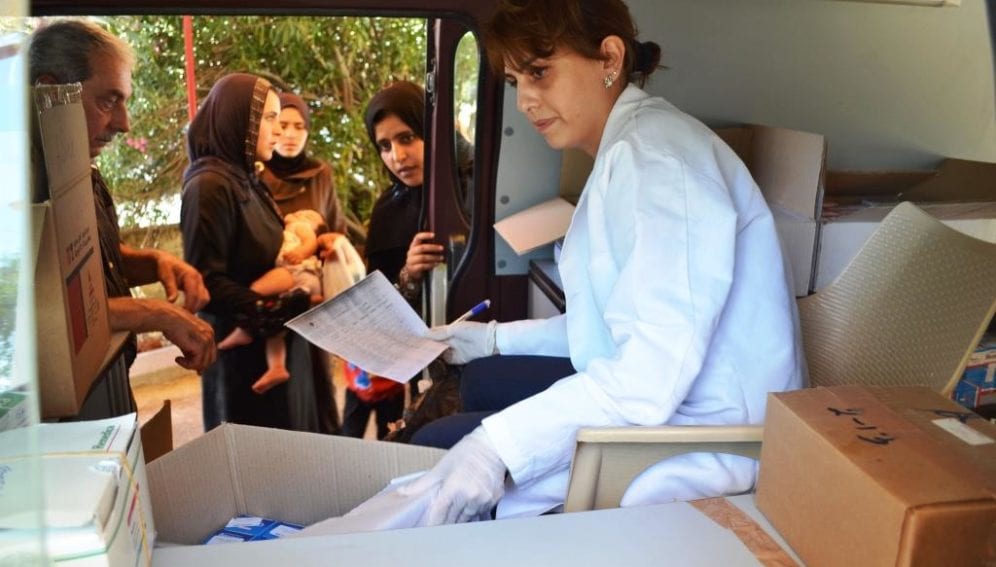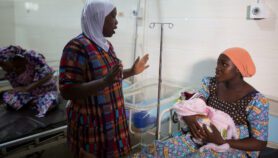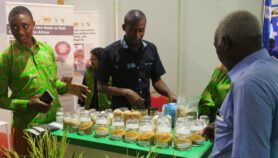By: Nehal Lasheen
Send to a friend
The details you provide on this page will not be used to send unsolicited email, and will not be sold to a 3rd party. See privacy policy.
Millions of lives in Syria have been lost, not only because of the war five years ago, but also because the health sector is no longer able to provide as many health services.
In this interview with SciDev.Net, Tarik Jasarevich, a spokesperson for the World Health Organization (WHO) and a communications manager for the Syrian territory, notes the pace of deterioration in Syria, its healthcare needs and details of how stakeholders are working on the ground to improve the situation.
What is your assessment for the health sector in Syria? Specifically in hospitals, health institutions and for health workers?
The health situation in Syria continues to deteriorate, not just day by day, but hour by hour. As always in conflict, it is innocent civilians that pay the highest price. Almost two-thirds of all Syrians have no access to clean water, putting them at risk of diseases like typhoid and cholera.
Throughout the country, almost 300 000 pregnant women are not getting the care they need for a safe and healthy pregnancy.
Every month, more than 30 000 people need treatment for injuries. People with chronic diseases are dying of complications that are easily controlled under normal circumstances. Half of all children are missing out on life-saving vaccinations, and one in four children are at risk of developing a mental health disorder that will have a long-term impact.
Despite these critical needs, more than half of the country’s health care facilities are either closed or only partially functioning, and are facing critical shortages in life-saving and essential medicines.
Half of all health professionals have fled the country and those that remain are at constant risk of attack. As the conflict continues, more lives are lost every day, not just due to the violence, but as people become victims of a failing health system that can no longer provide them with the health services they need to stay alive. Millions of lives are at risk.
Do WHO have plans to deal with the health situation in the besieged areas? Are there plans in the liberated areas to prevent the transmission of any epidemics?
The access for inter-agency (IA) convoys to 18 besieged and 164 hard-to-reach and priority cross-line areas is facilitated by OCHA.
From January-August 2016, WHO participated in 59 inter-agency convoys to besieged and hard-to-reach locations inside Syria, delivering 220 tons of medical and health supplies, including standard health kits, life-saving and life-sustaining medicines for treatment of chronic diseases, medical instruments and equipment.
Through 28 separate cross-line missions to hard-to-reach locations, WHO was able to provide an additional 35,000 treatments mainly for chronic diseases. Medicines included insulin, dialysis sessions and trauma kits.
In addition WHO's 68 NGO partners continue to provide essential primary, secondary and trauma health care services, especially in hard-to-reach areas.What are the most important diseases to control now in Syria? Are there any outbreak warnings?
WHO had set up early warning and response systems for disease surveillance (EWARS) with more than 1,100 sites reporting on disease outbreaks, one-third of which are reporting from opposition-controlled areas. This system has allowed WHO to monitor and rapidly respond to disease outbreaks and alerts across Syria.
Diseases reported from April to June 2016 included acute diarrhoea and food poisoning so WHO donated diarrhoeal disease kits to the health directorates in Aleppo, Damascus and Rural Damascus as well as cholera rapid diagnostic test.
What is your plan to control and prevent the spread of epidemics across the border to neighbouring countries?
Before the current crisis began, the immunization programme in Syria was one of the best in the Eastern Mediterranean region. According to national reports, coverage rates for polio, DPT and measles were above 90% until the year 2010.
Vaccination rates declined sharply when the conflict began in 2012. WHO and UNICEF estimate that routine vaccination coverage has dropped from 95 % to below 50%. Routine immunization has even completely stopped in some areas.
The polio outbreak in Deir ez Zor at the end of 2013 (35 confirmed cases of wild polio virus) served as a dramatic reminder of the importance of vaccination.
-
In the first half of 2016, WHO supported the following vaccination campaigns:
-
National routine vaccination days to immunize children who had not been reached in previous campaigns
-
An accelerated routine immunization campaign in northern Syria (Hama, Idleb and western Aleppo) that reached 73% of the children targeted
-
A measles and rubella vaccınatıon campaıgn in northern Syria in late March and early April that reached 883,000 children (86% of the total target)
-
A multi-antigen vaccination campaign targeting children under five in hard-to-reach and besieged areas. Most of the areas targeted were reached, with the exception of Qaboun and Jowbar (Damascus), As-Salamiyeh (Hama), Darayya and East Ghouta (Rural Damascus) and Idleb governorate. Of the 552,540 children targeted, 48% were vaccinated
-
Sub-national polio immunization days where a total of 1,105,073 children were vaccinated. A simultaneous polio campaign in the western governorates of northern Syrıa reached more than 620,000 children with trivalent oral polio vaccine. In addition to the above campaigns, WHO successfully switched from trivalent to bivalent oral polio vaccine in Syria; to eliminate the risk of vaccine-associated paralytic polio and circulating vaccine-derived poliovirus.
What are the difficulties facing those on the ground delivering health supplies and support? Is there any coordination with the ruling regime to deliver supplies to the besieged areas? How do you overcome these difficulties?
In 2016, a total of 65 tons of medical supplies have been fully rejected by the Government of Syria. In addition, medical personnel are still not allowed into the besieged areas, and medical evacuations are rarely allowed.
Protection of patients, health workers, medicines, supplies and health facilities is also a critical issue as attacks on health facilities continue across Syria.
Since the beginning of the conflict, WHO has consistently been calling on all parties involved in the conflict to allow regular and sustainable delivery of medical supplies, timely medical evacuations, payment of care for evacuees, vaccination teams and mobile clinics to enter hard-to-reach and besieged areas.
WHO provides regular updates on behalf of the health sector to the Report of the Secretary-General on the implementation of Security Council resolutions on Syria and to International Syria Support Group (ISSG).
Finally, what about the funding? Do you face a problems in getting funds to support this hard situation in Syria?
Under the Humanitarian Response Plan for 2016, WHO appealed for US$ 155,271,474 to implement the activities. As of 15 September 2016, WHO had received only 32.6% of that required amount.
Q&As are edited for length and clarity
This piece was produced by SciDev.Net’s Middle East and North Africa edition














